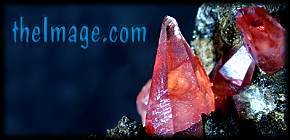
|
|
|||
|
Name: |
hornblende |
|
|||
|
Class: |
Silicates |
||||
|
Chemistry: |
(Ca,Na,K)2-3(Mg,Fe,Al)5(SiAl)8O22(OH)2 Complex hydro-Silicate |
||||
|
Color(s): |
green, brown, black |
||||
|
Hardness: |
5 - 6 |
SpecGrav: |
3 - 3.4 |
||
|
Fracture: |
uneven |
Cleavage: |
perfect |
||
|
Crystal: |
Monoclinic (usually long prismatic, sometimes w/ diamond shaped cross-section) |
||||
|
Envronment: |
a major rock-forming mineral, found in igneous and metamorphic rocks. |
||||
|
Association: |
augite,garnet,biotite,feldspars,quartz,epidote |
||||
|
Locals: |
| New Jersey, Idaho, USA | Canada | USSR | Japan | |
||||
|
Misc: |
The name comes from a old German miners word, "horn", which may be related to the color of horn, and the German word "blenden", which means "to deceive". It looked like many of the other mineral ores which could be smelted to produce metals, but hornblende failed to be smelted. |
||||
|
Photos |
|||||
|
1.) Bear Lake, Ontario, Canada |
|||||
|
|
|
|
|
|
|
|
|
|